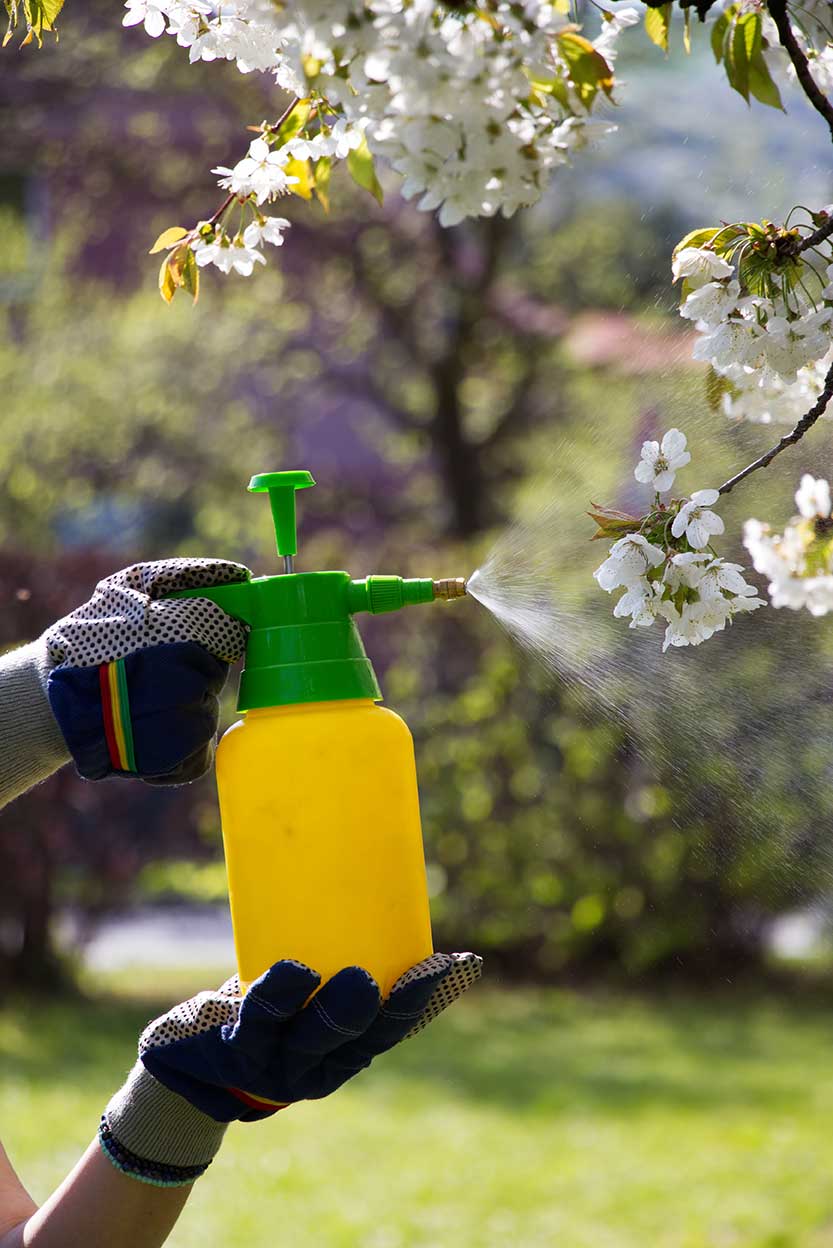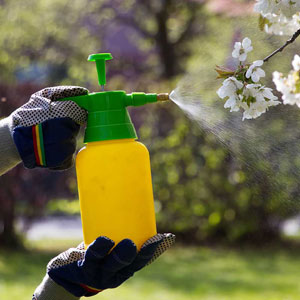
Chemical pesticides, fungicides and herbicides introduce toxins into the environment. Image credit: Shutterstock/encierro

VOCs are found in many paints and sealants. Image credit: Wikimedia Commons
Limit Toxins in Your Landscape
Use low- or no-VOC materials.
Volatile organic compounds, or VOCs, refer to a large number of mostly petrochemical-derived substances that readily become a gas at room temperature. VOCs can be bad for the environment and have been linked to a variety of negative health effects, including dizziness, irritation of the eyes and respiratory tract, damage to the nervous system, and cancer. When used outdoors, VOCs contribute to the formation of ground-level ozone, which is the primary component of smog.
Among the hundreds of VOCs found in consumer products are formaldehyde, benzenes, toluene, styrene, xylenes and chlorinated solvents such as trichloroethylene, carbon tetrachloride and methylene chloride. Landscape products that contain VOCs include primers, paints, stains, sealants and other finishes as well as paint strippers, adhesives, caulks and pesticides.
Most companies now produce effective and cost-competitive alternatives such as less toxic paints, stains and varnishes that use water instead of petroleum-based solvents and reduce emissions.
Check product labels and literature for information on VOC content. Usually listed in grams per liter, it can range from 5 to 200. Using a product with the lowest VOC content will yield the lowest overall environmental and health risk. Paints that meet the Green Seal standard are certified lower than 50 grams per liter for flat finish or 100 grams per liter for non-flat finish.
Avoid the Use of PVC
Polyvinylchloride (PVC) releases dioxin, a known carcinogen, during its manufacturing and disposal phases. PVC is commonly used in products such as plastic fencing, irrigation pipe, decking and garden hoses. It cannot be recycled and has a relatively short life span. Homeowners should consider alternatives to PVC such as HDPE (high-density polyethylene) piping or wooden decking or fencing. PVC products can give off gas chemicals called volatile organic compounds, or VOCs.
Limit the use of toxic pesticides.
The U.S. Environmental Protection Agency reports that homeowners apply pesticides at a rate as much as 20 times higher than what farmers use on agricultural land. Not only do pesticides endanger health, they pollute our water supply. Integrated pest management is just one technique for growing a productive lawn and garden without harmful chemicals.
Avoid chemically treated wood.
Wood sold before 2003 may have been treated with chromated copper arsenate, which could cause arsenic poisoning. Even the arsenic-free methods used to make wood rot-resistant have health risks and can pollute water. Instead, use a local wood that is naturally rot resistant.
Reduce landscape lighting.
Install only lighting needed for entertaining or after-dark activities and leave it off at other times. Darkness is an important part of human and wildlife body cycles, called circadian rhythms. Too much artificial light reduces melatonin production in humans (which has bad health effects) and interferes with the reproduction cycles of wildlife.







